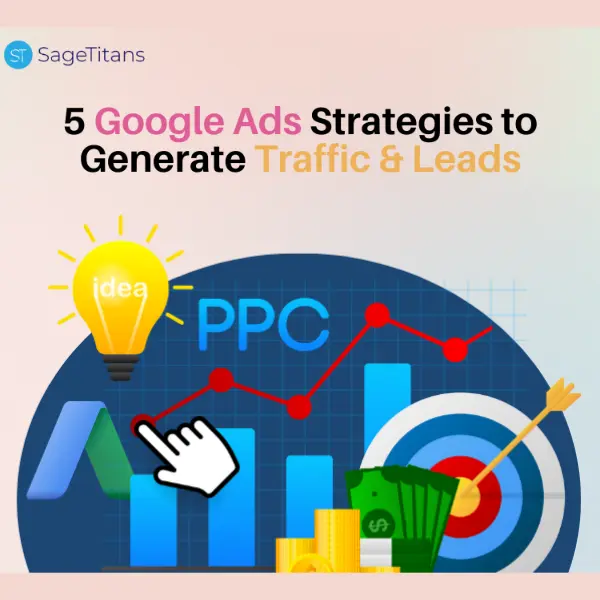
Top 5 Google Ads Campaign Management Strategies
Google Ads is a great way to generate leads and grow your business. By placing Google Ads, you can increase your chances of reaching the right people and converting them into customers. However, google ads can only turn beneficial if performed with an impressive Google ads campaign strategy. A foolproof Google ad campaign strategy is one that has a higher tendency to bring more leads and traffic. in this blog, we will discuss all the strategies one must follow to gain maximum profit.
1. Choose the right campaign objective in Google ads
Choosing the right campaign objective in Google Ads is an important step in ensuring the success of your advertising efforts. The objective you choose will determine the type of ad formats available to you, as well as the metrics that will be used to measure your campaign’s performance. Here are a few steps you can take to choose the right campaign objective for your business:
Identify your business goals
Before you start creating your Google Ads campaign, it’s important to clearly understand what you want to achieve. Are you looking to increase brand awareness, drive sales, or generate leads? Knowing your goals will help you choose the right Google Ads campaign objective.
Understand the available campaign objectives
Google Ads offers a variety of campaign objectives to choose from, including search, display, video, and shopping. Each objective is designed to achieve a specific goal, so make sure you understand what each one is meant for.
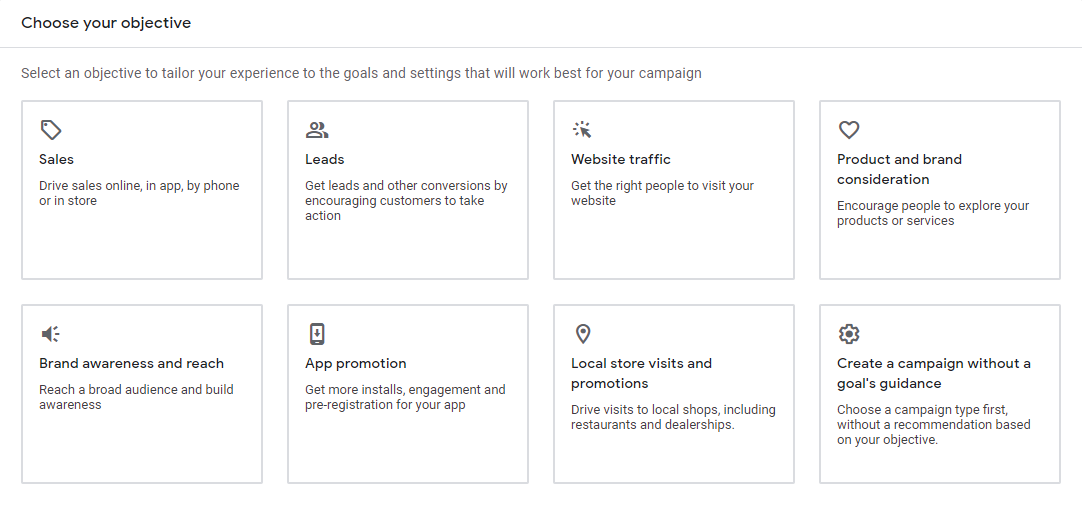
Evaluate your audience
Consider the demographics and interests of your target audience when choosing your campaign objective. For example, if you’re targeting an older demographic, a video campaign may not be the best choice. For search campaigns, bid on keywords that have the right intent to bring potential customers.
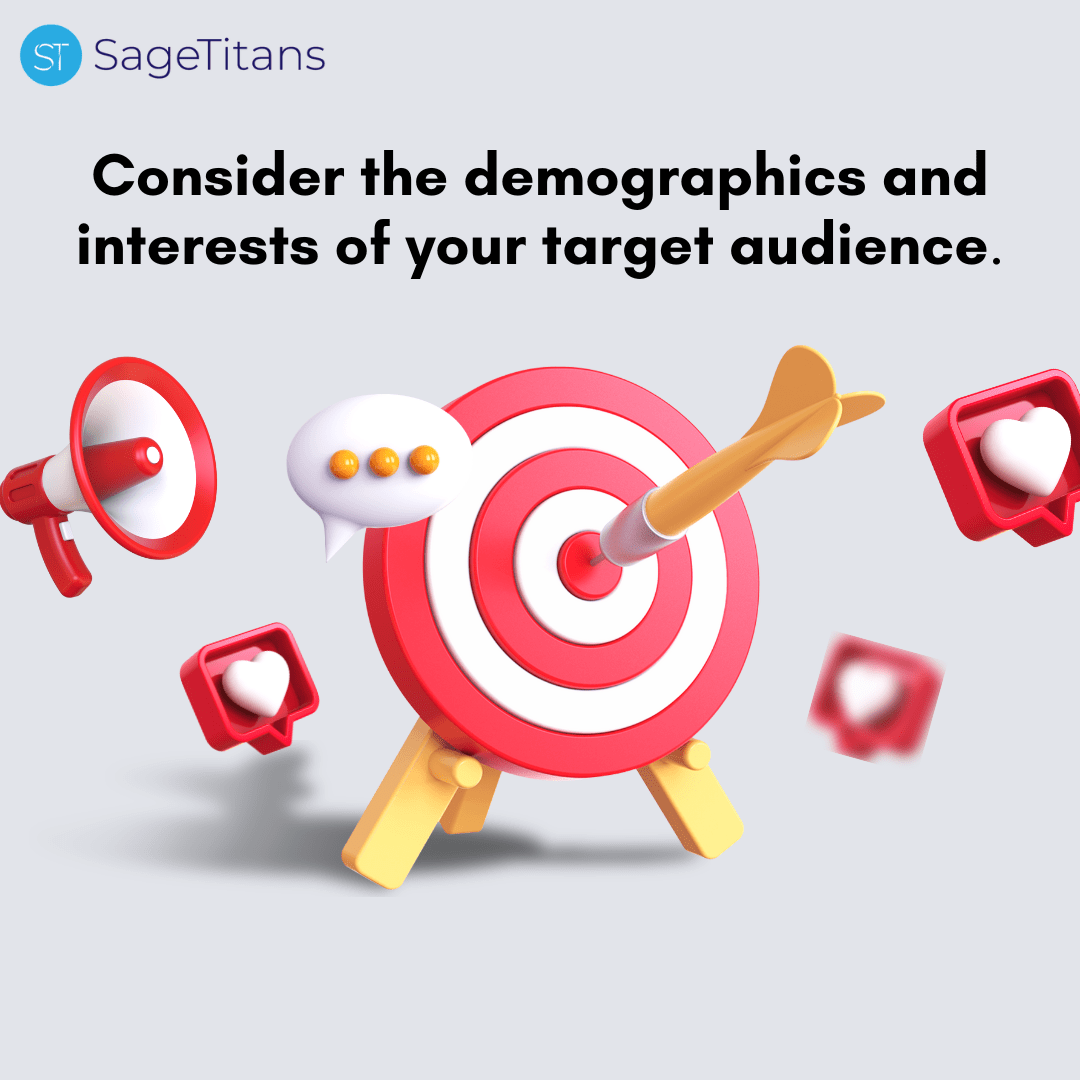
Consider your budget
Some campaign objectives may be more expensive than others, so it’s important to choose one that fits within your budget. For example, discovery ads, and performance max campaign costs might be higher than a basic search campaign.
The right campaign objective will ultimately depend on your specific business goals, target audience, and budget. By taking the time to evaluate these factors, you can choose an objective that will help you achieve your desired outcomes.
2. Enhance Your Google Ads campaign for the best performance
Enhancing your Google Ads campaign for best performance is a continuous process that requires regular monitoring and optimization. Here are a few steps you can take to enhance your campaign and improve its performance:
Targeted keywords
Conduct thorough keyword research to identify the most relevant keywords for your business and use them to create targeted ad groups. Use long-tail keywords, as they are more specific and have a higher conversion rate.
nbsp;
Ad extensions
Ad extensions such as site links, callouts, and structured snippets can help improve the visibility and click-through rate (CTR) of your ads.
Ad scheduling
Use ad scheduling to show your ads only during the times when your target audience is most likely to be searching for your products or services.
Remarketing
Remarketing allows you to target users who have previously interacted with your website. This can help increase conversions and boost your ROI.
Smart campaigns
Smart campaigns are designed for small businesses and are an easy way to get started with Google Ads. These campaigns use machine learning to optimize your ads for the best performance.
Landing pages
Use landing pages that are optimized for conversions: Make sure your landing pages are optimized for conversions by using persuasive design techniques, clear calls-to-action, and keeping the user’s attention on the most important information.
Ad variations
Use A/B testing to try different variations of your ad and see which performs best. Use this data to optimize your ads over time.
Target metrics
Monitor your campaign’s performance regularly and use the data to identify areas of improvement. Use metrics such as click-through rate (CTR), conversion rate, and return on ad spend (ROAS) to evaluate the performance of your campaigns.
By regularly monitoring and optimizing your Google Ads campaigns, you can improve their performance and achieve better results.
3. Use the Right Match Type in Google Ads Campaigns
Choosing the right match type in Google Ads is an important step in ensuring the success of your paid search campaigns. Match types determine how closely a user’s search query must match your keywords for your ad to be shown. Here are a few tips for choosing the right match type for your business:
Understand the different match types
Google Ads offers four main match types: broad, phrase, exact, and negative. Each match type has a different level of specificity, so it’s important to understand how they work and the potential implications for your campaign.
Consider the intent of your target audience
If your target audience is likely to use specific keywords and phrases in their search queries, then using a phrase or exact match type may be more effective. However, if your target audience is more likely to use broad or general search terms, a broad match type may be more appropriate.
Evaluate your budget
Exact and Phrase match types tend to have higher click-through rates (CTR) and ROI than the Broad match types, which may be more suitable for campaigns with a limited budget.
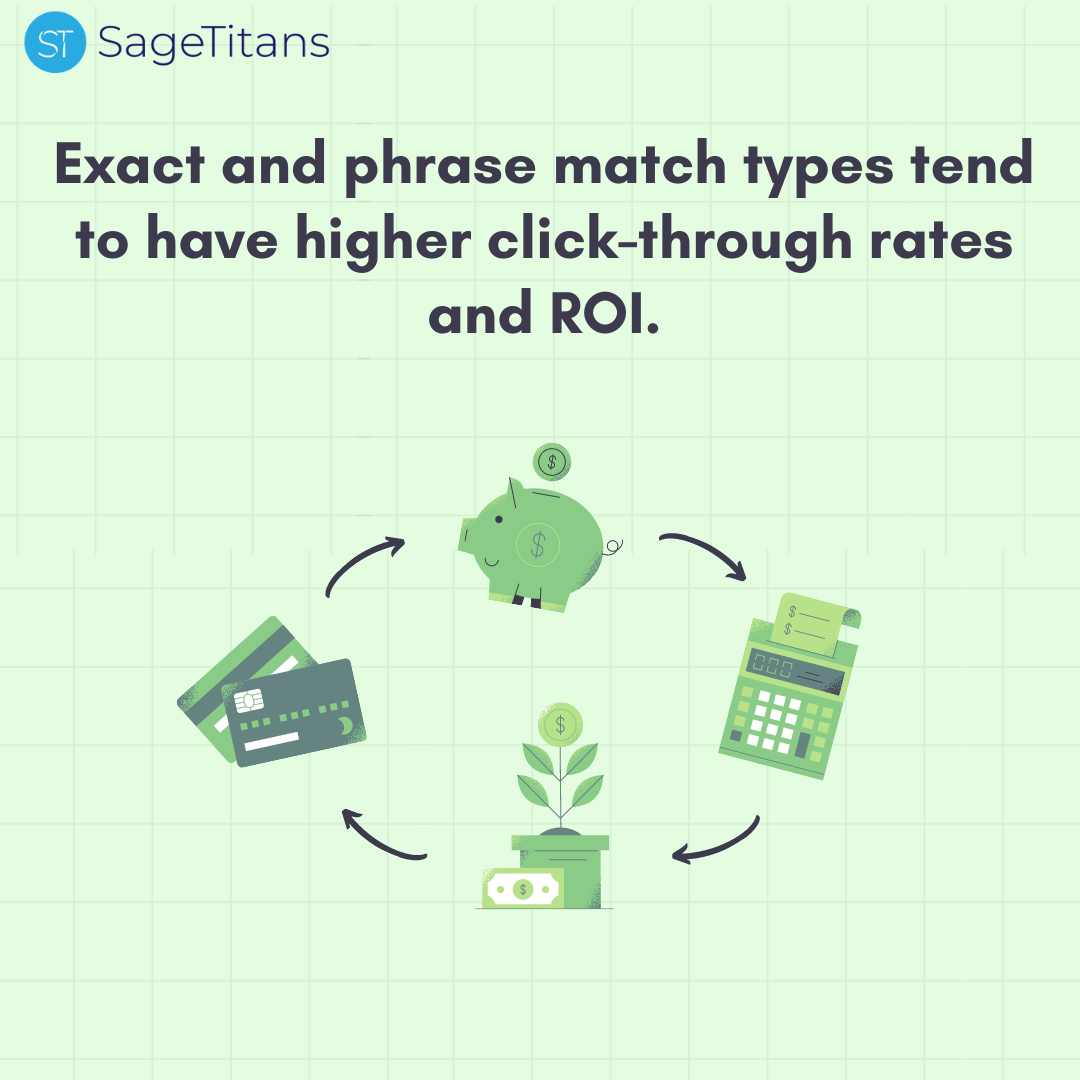
Test and measure
It is always recommended to test different match types and measure the results, this will give you a better idea of which match types are working best for you and your target audience.
Use negative match type
A negative match type allows you to exclude certain keywords from triggering your ads. This is helpful when you want to avoid irrelevant traffic or prevent your ads from showing for specific keywords that are not relevant to your products or services.
4. Create a Perfect Landing Page for the Google ads Campaign
Creating a perfect landing page for your Google Ads campaign is essential for maximizing the effectiveness of your advertising efforts. A well-designed landing page can help increase conversions and drive more sales for your business. Here are a few tips for creating a perfect landing page for your Google Ads campaign:
Make it relevant
Make sure the content on your landing page is relevant to the ad that brought the user there. The landing page should provide more information about the product or service that the ad advertised.
Keep it simple
Avoid cluttering your landing page with too much information or unnecessary elements. Instead, keep the design simple and focus on the most important information. This will help keep the user’s attention on the call to action.
Use a clear call to action
Make sure your landing page has a clear call to action that tells the user what you want them to do next. Whether it’s to make a purchase, sign up for a newsletter, or request more information, make it easy for them to take the next step.
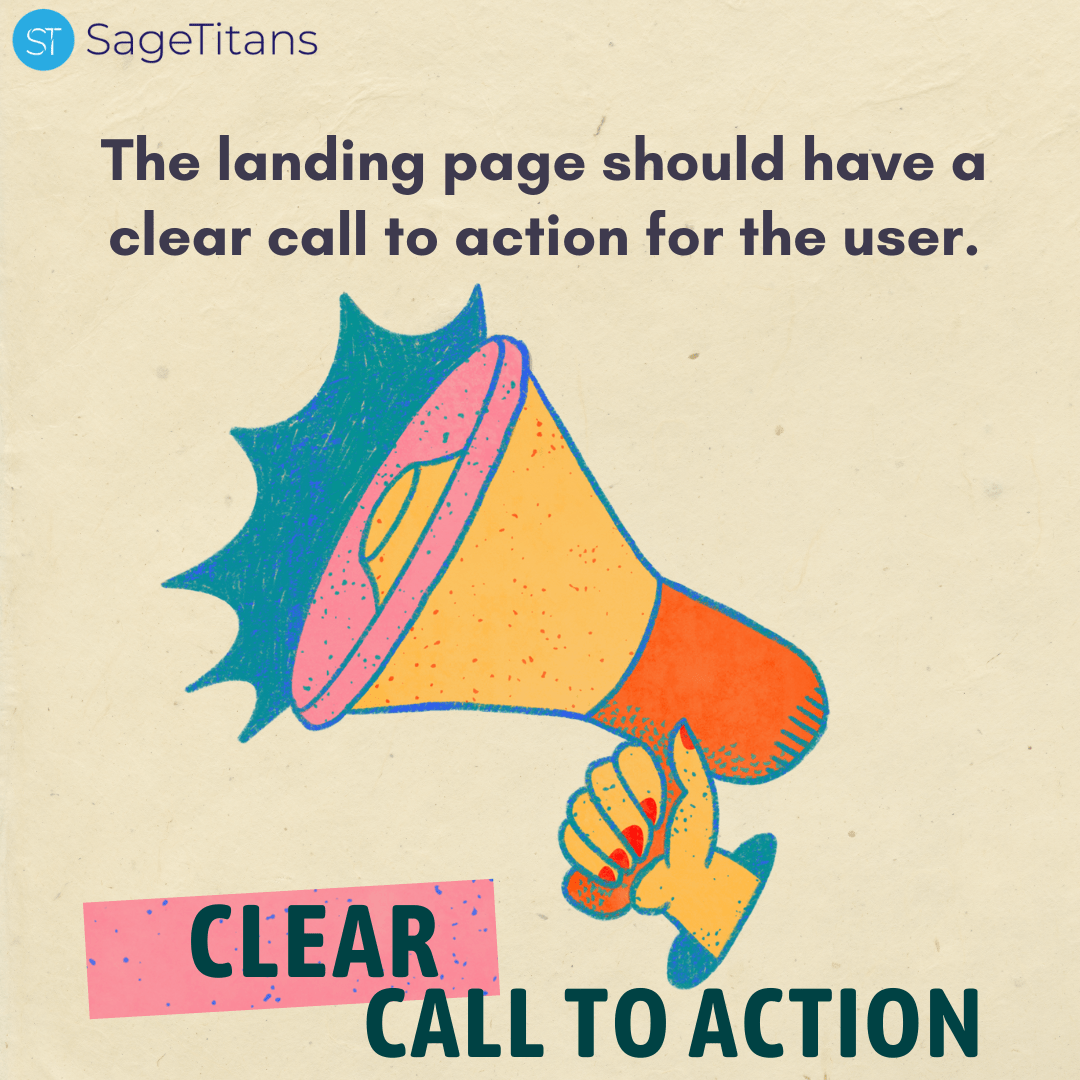
Optimize for mobile
More and more users are browsing the web on their mobile devices, so it’s important to make sure your landing page is optimized for mobile. This means using a responsive design and keeping the layout simple, so it’s easy to navigate on a small screen.
Use persuasive design
Use persuasive design techniques like social proof, scarcity, and urgency to encourage users to take action on your landing page.
Test and optimize
Once you’ve created your landing page, test it to see how it performs. Use tools like A/B testing to try different versions of your landing page and see which one performs best. Then, continue to optimize your landing page based on user feedback and performance data.
A perfect landing page is always optimized for conversions, easy to navigate, and designed to keep the user’s attention. By following these tips and testing different elements of your landing page, you can optimize your campaigns and increase conversions from your Google Ads campaign.
5. Monitor and optimize Google ads performance
Monitoring and optimizing the performance of your Google Ads campaigns is essential for ensuring that you are getting the best return on investment for your advertising spend. Here are a few steps you can take to monitor and optimize your Google Ads performance:
Set up tracking
Make sure you have set up proper tracking on your website so you can track conversions and other important metrics. Use Google Analytics or other tools to track key metrics such as clicks, impressions, cost per click (CPC), conversion rate, and return on ad spend (ROAS).
Use the right metrics
Identify the key performance indicators (KPIs) that are most important for your business and use them to measure the performance of your campaigns.
Use automated rules
Google Ads allows you to set up automated rules that will trigger when certain conditions are met. For example, you can set up a rule that automatically pauses a keyword with a high cost per click (CPC) if it isn’t generating conversions.
Use the data
Google Ads offers a variety of reports and metrics to help you track and analyze the performance of your campaigns. Use this data to identify areas of improvement and make changes to your campaigns as needed.
Use A/B testing
A/B testing allows you to test different versions of your ads, keywords, landing pages, and other elements of your campaigns to see which performs best. Use A/B testing to optimize your campaigns over time.
Keep an eye on the competition
Monitor the performance of your competitors by using tools such as SEMrush and Ahrefs to see what keywords they’re targeting and how they’re performing.
Regularly review and make adjustments
Regularly review the performance of your campaigns and make adjustments as needed. Keep in mind that it’s not always about increasing the budget, sometimes making small changes can have a big impact on the performance.
By monitoring and optimizing the performance of your Google Ads campaigns, you can ensure that you are getting the best return on investment for your advertising spend.
Conclusion
Google ads management is a great option for your business to grow quickly in the market with cost-effective strategies. Hire an expert Google Ads management company to manage your Google Ads campaigns to generate more leads for your business. Contact us to learn more about our Google Ads management services and actionable Google Ads Campaign Management Strategies.
